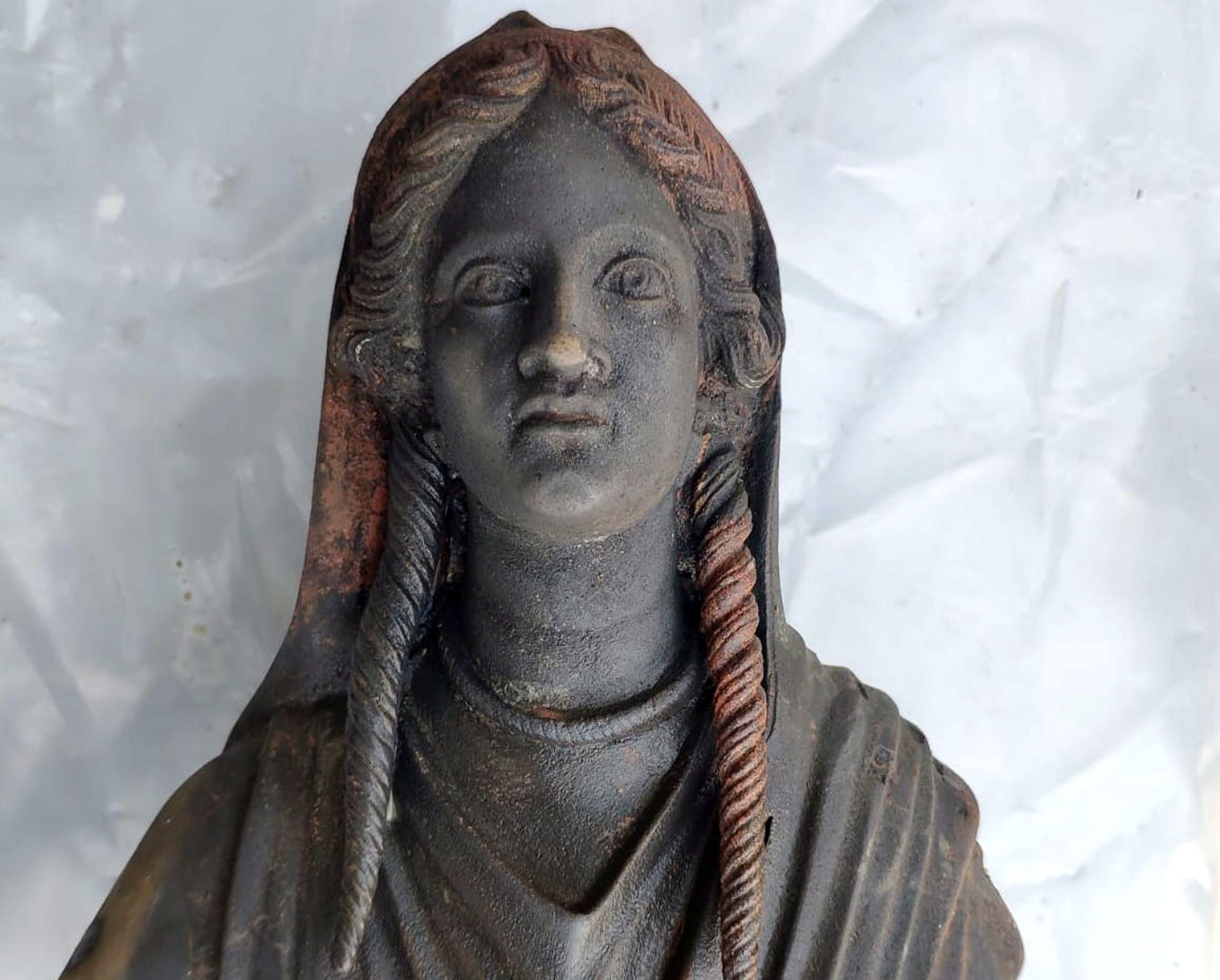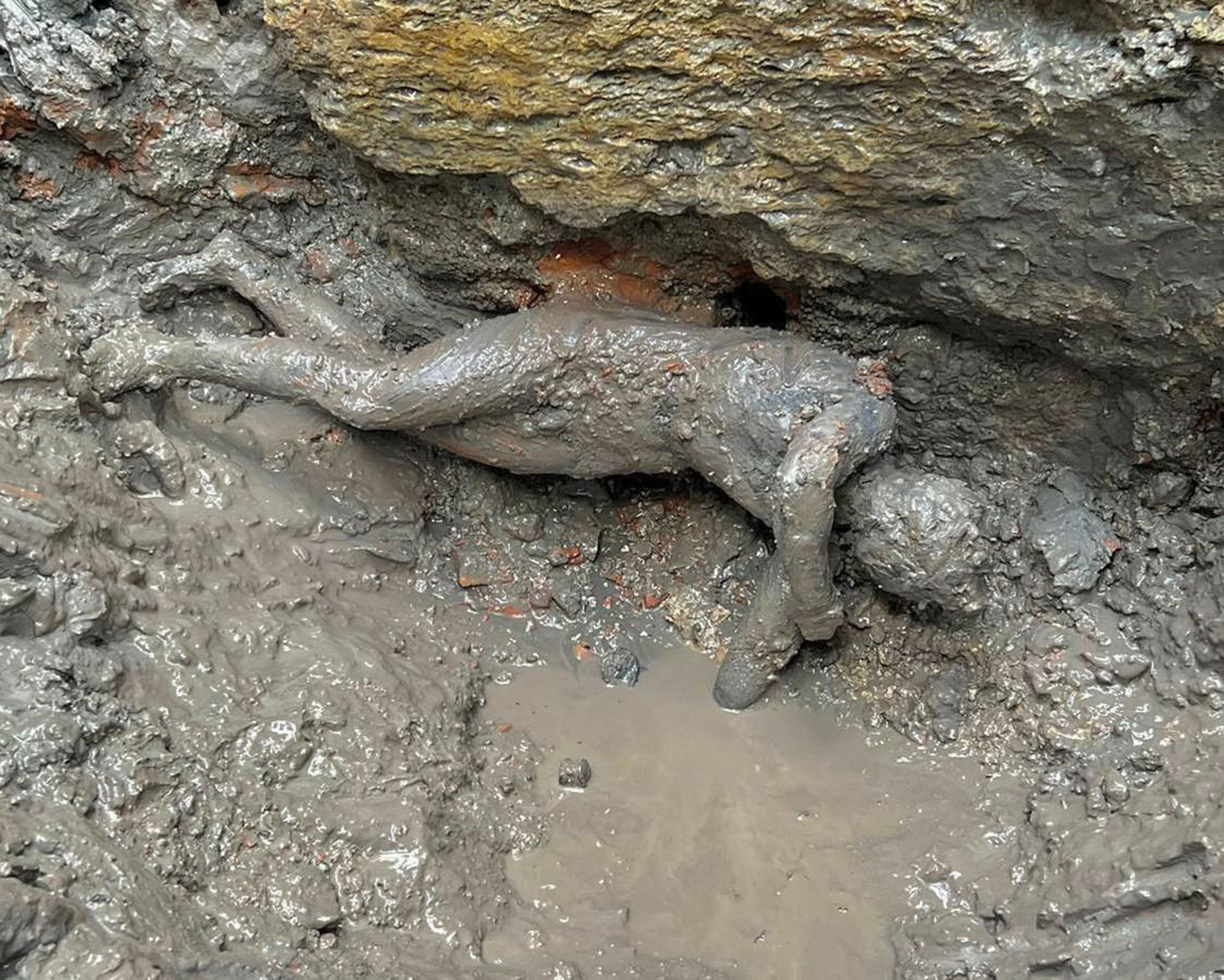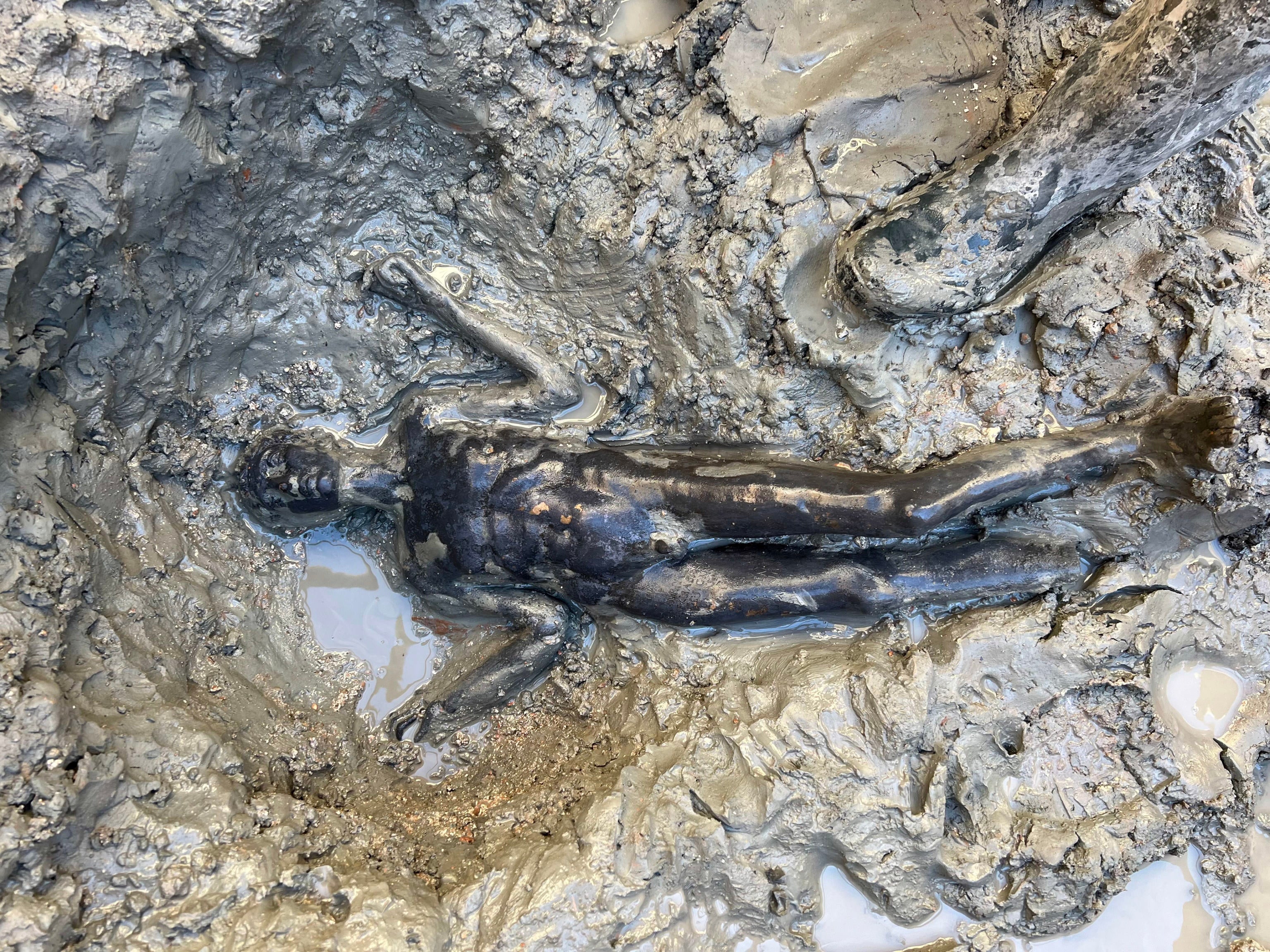Immaculately preserved bronze statues discovered in Tuscany ‘will rewrite history’
The 24 statues were preserved by mud and warm water in an ancient basin

More than two dozen immaculately preserved bronze statues of Greco-Roman deities, which date back to around the first 1st century AD, have been discovered nestled between the ruins of an ancient bathhouse in Tuscany.
The assembly of ancient Roman figures were found in San Casciano dei Bagni, a hilltop sanctuary in the Siena province, some 100 miles north of Rome, where archeologists have been exploring the mud-caked, sacred thermal baths since 2019.
Culture minister Massimo Osanna dubbed the find one of the most remarkable discoveries “in the history of the ancient Mediterranean” and the most important since the Riace Bronzes, a giant pair of ancient Greek warriors, were pulled from the sea in 1972.
The condition of the perfectly conserved statues – which have maintained their intricate facial features, striking inscriptions and flowing tunics – is down to the thick, mud shroud they have lain dormant beneath for some 2,000 years.

Among the assemblage of bronze-cast deities are Hygieia, the goddess health, and Apollo, the Olympian god of the sun. Tabolli believes the pair, and the other 22 statues they were discovered lying beside, were used to ornament a sanctuary before they were subemerged in the hot springs as part of a ritual.
“You give to the water because you hope that the water gives something back to you,” the minister said of the ritual.
Jacopo Tabolli, who coordinated the dig for the University for Foreigners in Siena, suggested they came from what he called an elite settlement, where archaeologists also found “wonderful inscriptions in Etruscan and Latin”, mentioning the names of powerful local families. Alongside the figures were some 5,000 coins in gold, silver and bronze.
To celebrate the “exceptional” find, a new museum will be built in the area to house the antiquities.
Tabolli said the discovery in the ancient basin was significant because it sheds new light on the end of the Etruscan civilization and the expansion of the Roman Empire in central Italy between the 2nd and 1st centuries BC.

War and conflict defined the era in what is today’s Tuscany, Umbria and Lazio regions, and yet, the bronze statues show evidence that Etruscan and Roman families prayed together to deities in the thermal springs.
“While there were social and civil wars being fought outside the sanctuary... inside the sanctuary the great elite Etruscan and Roman families prayed together in a context of peace surrounded by conflict,” Tabolli said.
“This possibility to rewrite the relationship and dialectic between the Etruscan and Romans is an exceptional opportunity.”
Among the human-like statues are bronze casts individual body parts and organs which would have been offered up as offerings to the gods for intervention for medical cures via the thermal waters, the ministry said in a statement.

“This is almost an X-ray of the human insides from the lungs to the intestines,” said Osanna, gesturing to a lung at the restoration laboratory where the bronzes are being treated.
“There are ears and other anatomical parts like hands. So, all these things that curative waters and the intervention of the divinities would have been able to save.”
The find represents the largest deposit of bronzes from this era in Italy, notable also because most surviving antiquities from the period are primarily in terracotta, the ministry said.
“It’s a discovery that will rewrite history,” Tabolli said in a statement.






Join our commenting forum
Join thought-provoking conversations, follow other Independent readers and see their replies
Comments